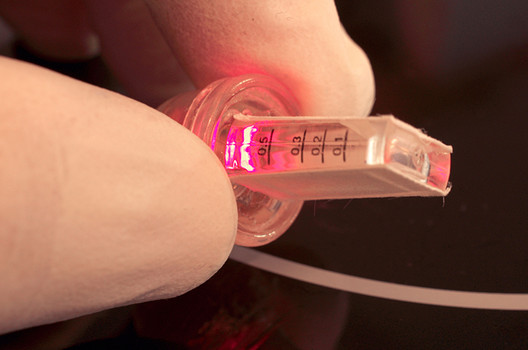Thought-controlled gene expression has stepped out of science fiction and into reality. After ten years of development, Martin Fussenegger, Professor of Biotechnology and Bioengineering at the Department of Biosystems in Basel, Switzerland, and colleagues have developed the first working device that turns brainwaves into light that controls genes.
The device uses an electroencephalogram (EEG) to transmit signals from the brain to a controller wirelessly through Bluetooth. The controller produces an electromagnetic field that supplies energy to a specially designed implant. The frequency of the brainwaves determines the frequency of the near-infrared light that the implant produces. The light reacts with a small and specific portion of a gene and produces a predetermined protein.
The researchers tested the device on cultured cells. The cells were made to manufacture the secreted embryonic alkaline phosphatase (SEAP) protein using the device. The device was also tested in mice. Three different states of mind were induced into volunteer humans that were connected to subject mice through the new device. The human state of mind was designated as concentration, meditation, and biofeedback. The test humans could concentrate and produce a production and release of the SEAP protein in mice at will.
The near-infrared light is used because the light produces little change in normal cells and is known to be a direct gene control mechanism. The researchers expect to be able to use thought-controlled gene regulation and protein production as a means to treat neurological diseases like epilepsy and chronic headaches. More creative minds might consider eliciting emotion with the device because most emotions can be produced by a similar methodology.















